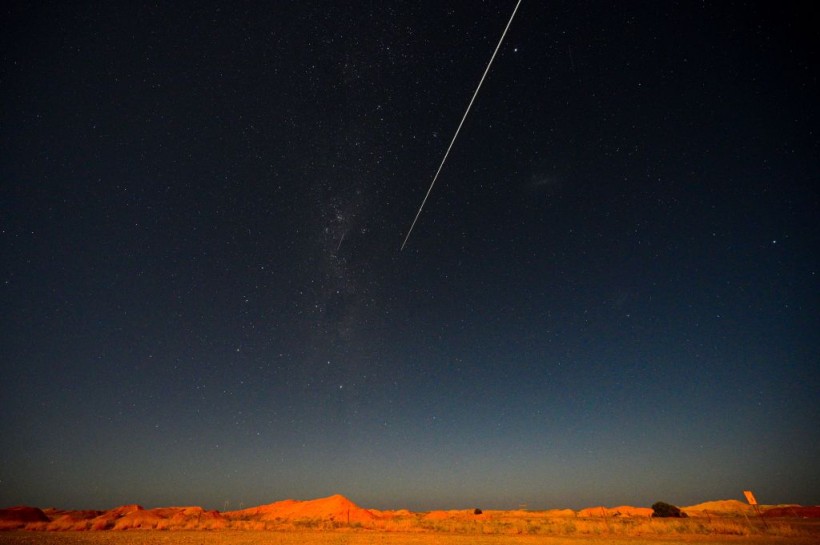In a rare space occurrence, a tiny space rock was discovered just a few hours before it crashed into Earth's atmosphere and landed in Lake Ontario in Canada on Saturday, Nov. 19, according to Space.com.
SpaceWeather.com reports that the mini-asteroid, less than 3 feet (1 meter) across, was discovered by astronomer David Rankin at Arizona's Mount Lemmon Observatory.
The space rock was heading from the direction of the main asteroid belt between Mars and Jupiter's orbits and was on a crash course with Earth, based on follow-up sightings of other astronomers.

TOPSHOT - JAXA's Hayabusa-2 probe's sample drop to earth after landing on and gathering material from an asteroid some 300 million kilometres from Earth is seen from Coober Pedy in South Australia on December 6, 2020. - Call it a special delivery: after six years in space, Japan's Hayabusa-2 probe is heading home, but only to drop off its rare asteroid samples before starting a new mission.
Mini-Asteroid C8FF042
NASA has since dubbed the mini-asteroid as C8FF042. It ripped through the sky above Canada and crashed in Lake Ontario three hours after the initial detection.
This was a rare space occurrence because it is only the sixth instance of an asteroid being discovered right before impact, according to the European Space Agency (ESA).
A slightly larger space rock was also discovered in March by a Hungarian astronomer just two hours before it exploded above the northern Atlantic Ocean.
Witnesses in Toronto and the surrounding area claimed to have seen the brilliant fireball that illuminated the sky on Saturday at approximately 3:27 EST (0827 GMT).
Radar stations monitored the meteorite, according to NASA, from an altitude of around 9 miles (15 km) to 0.53 miles (0.850 km), where it most likely broke apart.
Officials from the space agency reported that most of the fragments likely landed in Lake Ontario, with some minor parts coming close to the communities of Grimsby and McNab. There have been 59 reports of fireball sightings to the American Meteor Society.
Small Asteroids
Our planet frequently comes into contact with small asteroids. The tiniest ones normally burn up in the Earth's atmosphere, leaving nothing but fleeting light streaks, as per Space.com.
Larger rock fragments can come to Earth as rare meteorites, which scientists can investigate to learn more about the makeup of solar system bodies.
Huge rocks that are wider than 65 feet (20 m) can pose issues on Earth because the shockwaves that their explosions cause can break windows and topple trees.
NASA's DART mission struck the tiny asteroid moonlet Dimorphos in September of this year in an attempt to change its orbit around its parent asteroid Didymos. The planetary defense test was successful in showing that asteroid risks can be stopped in the future if they are recognized early.
Related Article: Why Amateur Asteroid Hunters are Important in Planetary Defense; Here's How They Help NASA, Other Space Agencies
This article is owned by Tech Times
Written by Jace Dela Cruz









